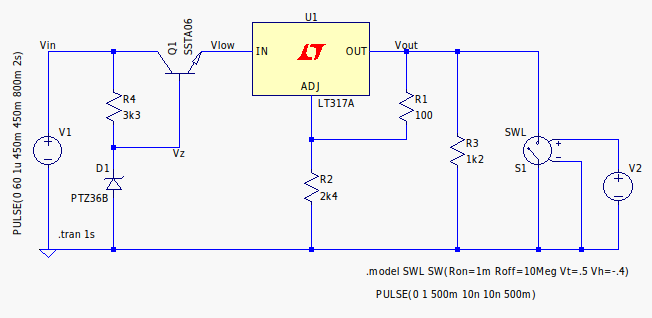I want to make a voltage regulator for a symmetric power rail +30/-30V. The idea is to use an LM317 and an LM337.
I want to be able to regulate with a Vin that can go up to +60V (and -60 and negative rail).) The LM317 can only have a voltage drop between IN and OUT of 40V. In case of a short that value would be exceeded. After some digging I found that I can do a pre-regulator as in the picture below.
Once the voltage VIN is above about 36V, the Zener diode would kick in and the BJT will do it's thing.
My issue is tgat I don't know how to size that pre-regulator.
More specifically, how do I size R9?
I think it's R9= (Vzener-Bbe)/(Izener+Ibase), but Izener depends on temprature and voltage accross the Zener diode. I'm not sure about the Ibase.
Important note (maybe) my load is around 25mA. D1 is just there for reverse polarity protection.
EDIT 19/04. As Vangelo pointed it out, with the current disign there is a issu in case of a short on Vout. So I added this simple circutry and it seems to be working. I found this here https://jeangaillat.wordpress.com/2018/03/29/je-suis-fou-des-alimentations-lectroniques/amp/
the 1200 resistor is to simulate my charge at 25mA.









